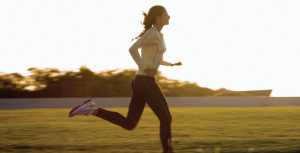What Is Active Release Technique?
 We’ve recently talked about dynamic stretch assessment, a technique used to identify physical restrictions that prevent you from achieving optimal athletic performance. During the discussion about dynamic stretch assessment and overhead squat assessment in part three of our webinar, Mansfield, Texas chiropractor Dr. Prak Bhakta suggested Active Release Technique (ART) as an effective method of releasing these restrictions, which are caused by a buildup of scar tissue. Here’s the lowdown on this innovative bodywork method that has helped countless runners and triathletes quickly eliminate back pain, knee pain, shin splints, plantar fasciitis, and numerous other overuse injuries.
We’ve recently talked about dynamic stretch assessment, a technique used to identify physical restrictions that prevent you from achieving optimal athletic performance. During the discussion about dynamic stretch assessment and overhead squat assessment in part three of our webinar, Mansfield, Texas chiropractor Dr. Prak Bhakta suggested Active Release Technique (ART) as an effective method of releasing these restrictions, which are caused by a buildup of scar tissue. Here’s the lowdown on this innovative bodywork method that has helped countless runners and triathletes quickly eliminate back pain, knee pain, shin splints, plantar fasciitis, and numerous other overuse injuries.
What Is ART and How Is It Performed?
Active Release Technique is a form of soft tissue manipulation that is more aggressive than your typical massage but provides faster and more efficient results. Practitioners are trained to evaluate problems with the muscles, fascia, ligaments, and other soft tissues by palpating them. Issues such as tightness, abnormal texture, or limited range of motion are then addressed with intense massage techniques that require the patient to move in a specific way while the tissues are manipulated. This technique helps release the scar tissue so that normal function is restored.
When Is ART Indicated?
Scar tissue in the muscles and surrounding soft tissues can form in two ways: 1) acute tears and pulls, or 2) overuse injuries caused by cumulative microtraumas. In either case, the scar tissue caused by the tears builds up and prevents surrounding tissues from moving freely. As a result, the muscles shorten and weaken and tendons experience inflammation, which can lead not only to bilateral deficiencies and poor biomechanics but also serious injuries and chronic pain. The scar tissue may also trap nerves, leading to weakness, numbness, and tingling sensations. ART can often relieve pain and biomechanical issues caused by these adhesions in just a few sessions.
To learn more about dynamic stretch assessment, Active Release Technique, and bilateral equivalence, check out part three of our free webinar today. You can also educate yourself about our footbed products and corresponding apps for Android or iOS by exploring the RPM2 website.
Comments (0)
Write a comment
Rating: Bad Good
Enter the code in the box below: